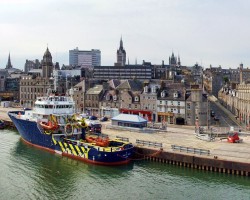Best time to go to Scotland for a perfect weather and where to go?
When is the best time to go to Scotland?
Located in the north of the United Kingdom and known for its rainy weather all year round, it is not easy to know when to go to Scotland. The best time to visit is between early May and late September, when temperatures are the warmest and days are longest, although showers can be expected throughout the country.
It is during the summer months, between July and September, that the weather remains the most pleasant. However, this is also the peak tourist season and one should expect a high influx of vacationers, whether they are locals or foreigners. Not surprisingly, it is also during this time of the year that prices are the highest.
What is the best time to visit Scotland away from the crowds of visitors? If you dream of exploring the moorland landscapes or the rugged cliffs of the coasts in peace and with a reasonable budget, it is best to favor late spring, in May and June. It will also be a golden opportunity to admire the blooming meadows and enjoy beautiful sunshine. It is in the central region and on the east and west coasts that the weather is most clement at this time of the year.
The rest of the time, Scotland is much less popular with vacationers, as one should expect rather low temperatures, and even snow on the heights of the Highlands. If you are a fan of winter sports, it can be an original destination to enjoy the pleasures of powder snow!
However, outside the mountains, many hotels and country inns are closed during this period. If the cold does not scare you, the plan B is to rent a van or a camper van with heating to explore Scotland off the beaten track and feel like you are alone in the world!
Where and when to go based on the weather?
Central Region
Stirling, Falkirk, Loch Lomond & The Trossachs National Park...
East Coast of Scotland
Edinburgh, Aberdeen, Dundee...
Highland
Inverness, Fort William, Skye...
Orkney Islands
Kirkwall...
Outer Hebrides
Stornoway...
Shetland Islands
Lerwick...
West Coast of Scotland
Glasgow, Dumfries, Isle of Mull...
To get all the information about the climate and weather in Scotland for a specific month, click on the corresponding link below:
Scotland in january Scotland in february Scotland in march Scotland in april Scotland in may Scotland in june Scotland in july Scotland in august Scotland in september Scotland in october Scotland in november Scotland in december
Best time to travel to Scotland by cities
Climate and Weather in Scotland
The climate of Scotland is oceanic with two variations: in most of the country, from Edinburgh to Glasgow via Aberdeen, summers are mild. However, further north, around Inverness and beyond, summers are short and cool.
Like its neighbors Ireland or Wales, Scotland's weather is known for its humidity and harsh conditions. As a result, temperatures rarely exceed 20°C and it's hard to escape the rain. However, there are no downpours here! Instead, light drizzles are common throughout the year, often interspersed with clear spells.
Whatever the season of your trip, it is essential to be well equipped. Among the essentials to pack in your suitcase, don't forget waterproof clothing and shoes, layers of clothing to adapt to the weather, a good midge repellent for the period between mid-May and late September, and sun protection.
Here's what to expect according to the season:
- In summer, temperatures in Scotland hover around 15°C in most of the territory and can reach up to 20°C on the east coast. Contrary to popular belief, it's not the driest period and is even less sunny than spring. However, its latitudes offer long days, with daylight lasting until late, especially in the north of the country.
- Autumn starts from the end of August and is relatively short. Even though the weather is more changeable than at other times of the year, the landscapes are adorned with fabulous colors!
- In winter, night falls in the mid-afternoon, but it's the ideal season to observe incredible Northern Lights in the far north. Further south, the Highlands are covered in snow, but temperatures remain bearable with the thermometer rarely dropping below 0°C.
- Spring combines all the advantages for a successful trip: the days lengthen quickly and the sun shines brightly.

The weather in Scotland will also vary depending on the region you are in:
Climate on the west coast of Scotland and in the Highlands
Located in the north of the country, the Highlands experience a wetter and windier climate than elsewhere. This dreadful weather is due to the presence of mountains, but also to the prevailing winds coming straight from the Atlantic Ocean. However, it is thanks to this frequent rain that this part of Scotland benefits from exceptional landscapes and nature!
If you want to explore this stunning region, opt for the summer months, which are mild on the Isle of Skye and its surroundings, but much shorter towards Inverness, inland.
On the west coast, south of the Highlands, the weather is more pleasant, and a trip is entirely possible from the month of May.
Climate in the east and central Scotland
Overall, this part of Scotland experiences a temperate oceanic climate, except in the Cairngorms National Park, near Inverness, where summers are short and cool.
Along the coast, temperatures can be very pleasant in summer. The most favorable months to go there are therefore July and August. However, it is entirely possible to have an idyllic stay in the spring: this region is the least rainy! In the center of the country, around Stirling, the best season is also between May and September, as winters there are colder than in the rest of the country.
Climate of the Shetland Islands
Located at the extreme north of Scotland, at the same latitude as Bergen in Norway, the Shetland Islands are never in total darkness when summer arrives. You can therefore experience the unique phenomenon of the midnight sun! In terms of climate, as well as architecture and landscapes, they resemble more Scandinavia than Britain. The Northern Lights themselves are not rare in this part of Scotland during winter.
Surprisingly, the climate there is rather mild. Winters are cold but not icy, while summers are rather cool. Moreover, fog is very common on the Shetland Islands.
Climate of the Outer Hebrides and Orkney Islands
These two Scottish archipelagos have a marked oceanic climate with temperate summers. Although located in the north of the country, they benefit from mild weather all year round, even though rain is prevalent. Thus, winter temperatures rarely drop below 8°C, while they hover around 15°C in summer.
To discover the beauties of the Outer Hebrides, prefer the months of June, July, August, and September. In the Orkney Islands, located further north, the good season is shorter, and it is advisable to plan a stay between July and September to fully enjoy them.
Temperatures and rainfall in Scotland
On these 3 graphs, we present the evolution of temperatures of Scotland and month-by-month rainfall for the cities of Edinburgh, Aberdeen, Glasgow, Inverness and Dumfries, as well as the month-by-month sea temperature for coastal cities.
Peak visitor numbers and tourist seasons in Scotland
Find out when Scotland has its high tourist season (the period when the influx of tourists is highest) and off-peak tourist season using our data and figures.
Tourist seasons in Scotland
The months with low numbers of tourists are: January, February, March, April, October, November and December. The number of visitors to Scotland is high in: May, June, July, August and September.
- Very low season in Scotland: January, February, March and November.
- Low season in Scotland: April, October and December.
- High season in Scotland: May, June and September.
- Peak season in Scotland: July and August.
Figure: Visitor index for Scotland month by month
Average price for flights to Scotland
A return flight between New York City and Edinburgh is generally cheaper if you go in october ($ 927 on average): this is the best time for travellers on a tight budget. In contrast, you may end up paying $ 380 more for your airline ticket to Edinburgh if you go in june.
Find the best price for your flight Flight prices to Scotland
Where to go in Scotland?
This table allows you to see the maximum temperature for each city and our opinion on the weather month by month (see colour legend below the table).
| Cities | jan. | feb. | mar. | apr. | may | jun. | jul. | aug. | sep. | oct. | nov. | dec. |
| Edinburgh | 6°C | 7°C | 9°C | 11°C | 14°C | 17°C | 18°C | 18°C | 16°C | 13°C | 9°C | 7°C |
| Aberdeen | 6°C | 6°C | 8°C | 10°C | 12°C | 15°C | 17°C | 17°C | 15°C | 12°C | 9°C | 7°C |
| Glasgow | 6°C | 6°C | 8°C | 11°C | 14°C | 17°C | 18°C | 17°C | 15°C | 12°C | 9°C | 6°C |
| Inverness | 5°C | 6°C | 8°C | 11°C | 14°C | 16°C | 18°C | 17°C | 16°C | 12°C | 8°C | 5°C |
| Dumfries | 6°C | 7°C | 9°C | 11°C | 14°C | 17°C | 18°C | 17°C | 16°C | 13°C | 9°C | 7°C |
| Dundee | 5°C | 7°C | 9°C | 11°C | 14°C | 16°C | 18°C | 18°C | 16°C | 13°C | 9°C | 6°C |
| Falkirk | 5°C | 6°C | 9°C | 11°C | 14°C | 17°C | 18°C | 18°C | 16°C | 12°C | 8°C | 6°C |
| Fort William | 4°C | 5°C | 7°C | 10°C | 12°C | 15°C | 16°C | 16°C | 14°C | 11°C | 8°C | 5°C |
| Isle of Mull | 6°C | 6°C | 8°C | 10°C | 13°C | 15°C | 16°C | 16°C | 15°C | 12°C | 9°C | 7°C |
| Kirkwall | 8°C | 8°C | 8°C | 9°C | 10°C | 12°C | 14°C | 15°C | 14°C | 12°C | 10°C | 9°C |
| Lerwick | 8°C | 8°C | 8°C | 9°C | 10°C | 12°C | 14°C | 15°C | 14°C | 12°C | 10°C | 9°C |
| Loch Lomond & The Trossachs National Park | 4°C | 4°C | 6°C | 9°C | 11°C | 14°C | 15°C | 14°C | 13°C | 9°C | 7°C | 5°C |
| Skye | 7°C | 7°C | 8°C | 10°C | 12°C | 14°C | 15°C | 15°C | 14°C | 12°C | 10°C | 8°C |
| Stirling | 5°C | 6°C | 8°C | 11°C | 14°C | 17°C | 18°C | 18°C | 16°C | 12°C | 8°C | 6°C |
| Stornoway | 8°C | 8°C | 8°C | 10°C | 11°C | 14°C | 15°C | 15°C | 14°C | 12°C | 10°C | 9°C |
| Applecross | 6°C | 6°C | 8°C | 10°C | 12°C | 14°C | 16°C | 16°C | 14°C | 12°C | 9°C | 7°C |
| Cairngorms National Park | 3°C | 3°C | 4°C | 7°C | 9°C | 12°C | 14°C | 13°C | 11°C | 8°C | 6°C | 4°C |
| Durness | 7°C | 7°C | 8°C | 9°C | 11°C | 13°C | 15°C | 15°C | 14°C | 12°C | 10°C | 8°C |
| Eyemouth | 7°C | 7°C | 8°C | 9°C | 12°C | 14°C | 16°C | 16°C | 15°C | 12°C | 10°C | 8°C |
| Fort Augustus | 3°C | 4°C | 7°C | 10°C | 13°C | 16°C | 17°C | 16°C | 14°C | 11°C | 7°C | 3°C |
Legend:
good weather
tolerable weather
bad weather
very bad weather
About Scotland
What can I do in Scotland?
Beaches / swimming
Nature and countryside
Culture and heritage
Sports
Family travel
Crafts / shopping
Gastronomy
Nightlife
Is this weather information for Scotland reliable?
Climate data for Scotland has been gathered every day since January 2009. The analysis of these meteorological data for Scotland allows us to determine the average for each month in Edinburgh, Aberdeen, Glasgow, Inverness, Dumfries, Dundee, Falkirk, Fort William, and 92 other cities.
So yes: this data is reliable except in cases of temporary climate disruption in the region.






